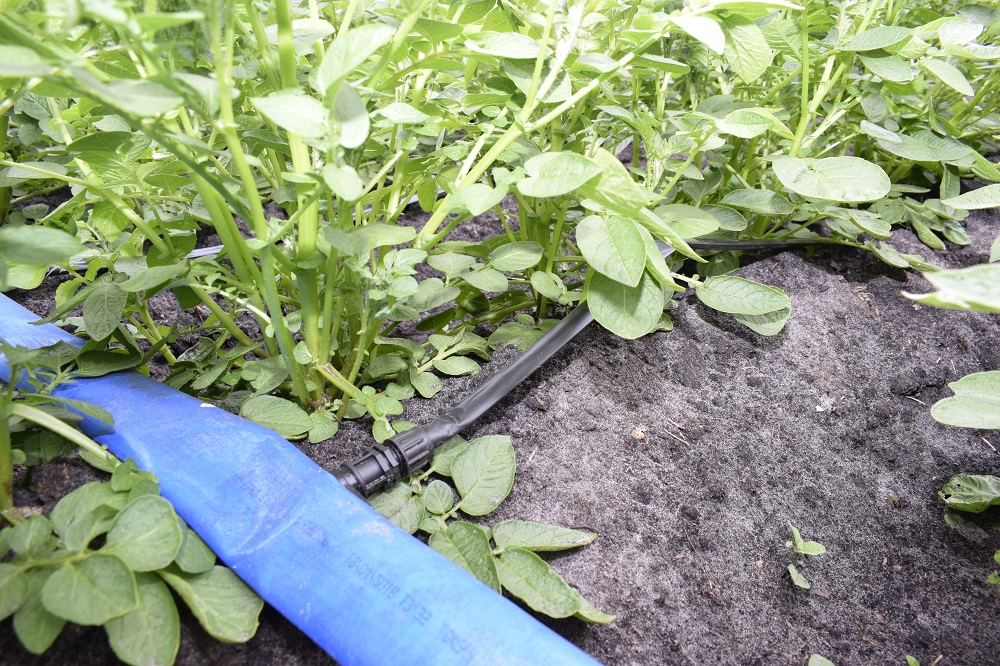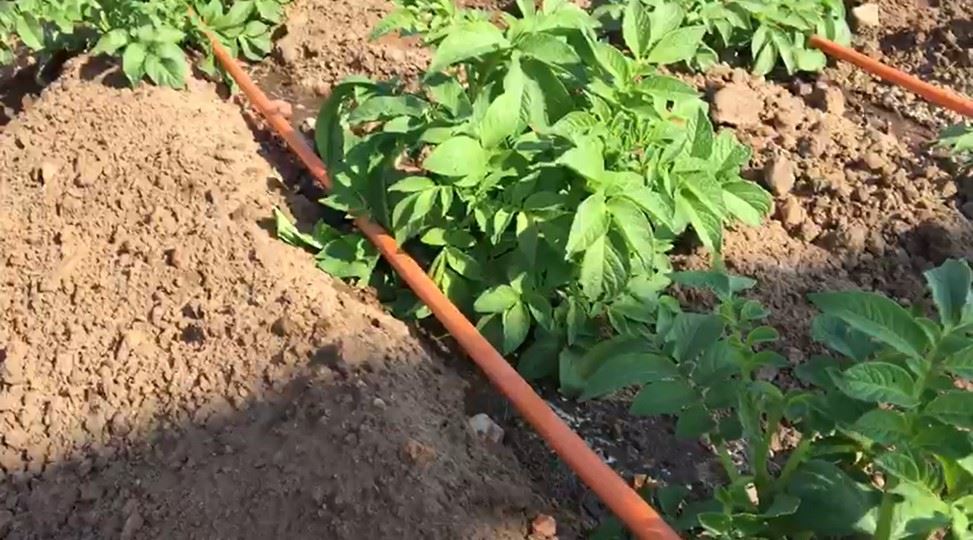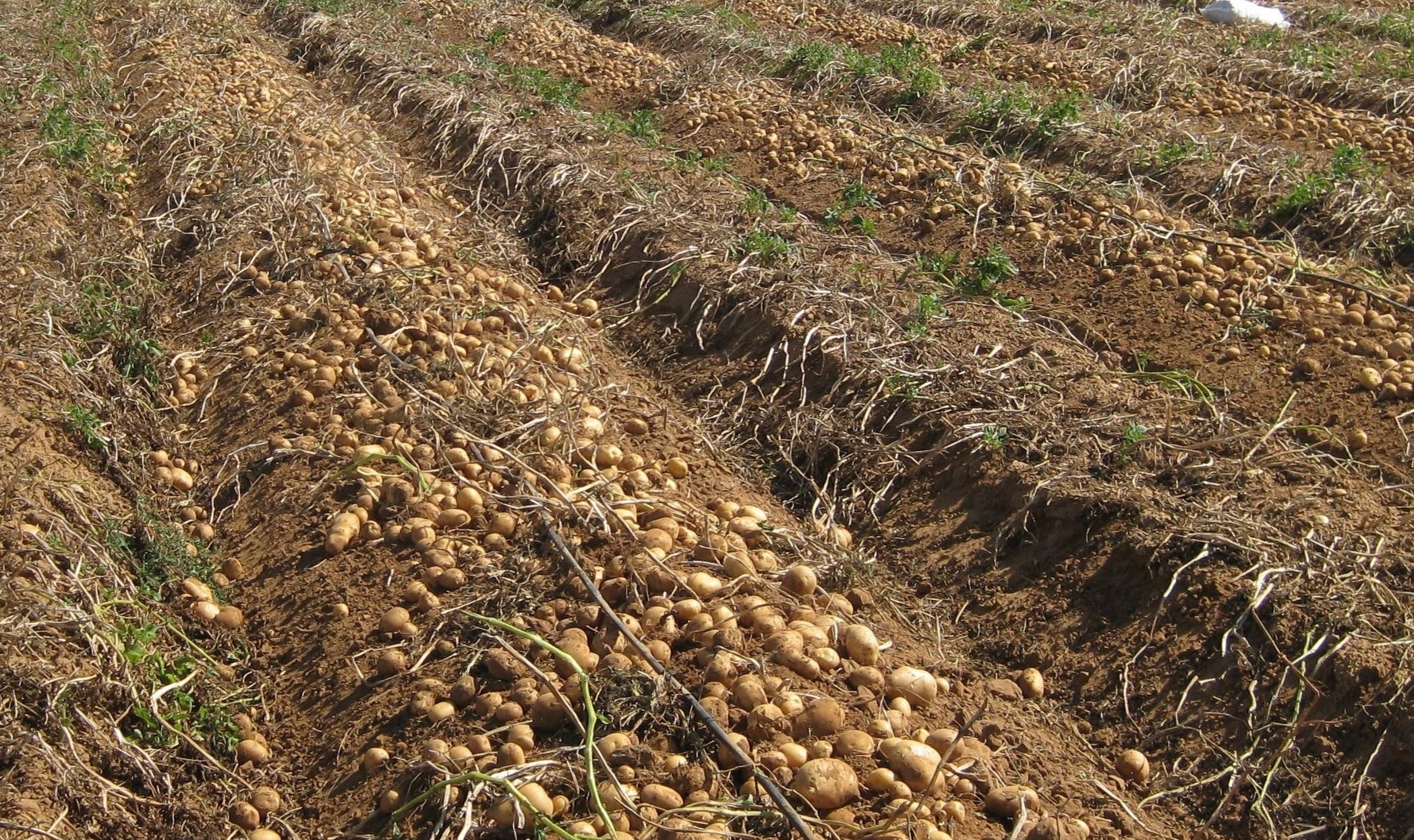Fertigation, in which drip irrigation is combined with fertilization, provides substantial additional yields. This has been shown by various tests in onions and potatoes. Water is distributed more precisely and manure is delivered exactly where you want it. “Fertigation is a successful horticultural concept. There is still a lot to learn, but in five years’ time this will also be applied much more widely in the arable farmer and it will offer a solution for problems that we are still getting stuck with. ”

Fertigation
Johan Aarnoudse shared his vision during a special webinar on fertigation organized by the Netherlands Center for the Development of Circular Precision Fertilization (NCOK). Aarnoudse is an arable farming advisor to Van Iperen BV. The ‘growth specialist’ has many years of experience with fertigation from horticulture. “It ensures that you can dose accurately to the millimeter. Via the dosing system it reaches the crop with drip hoses. ” There are already several onion and potato growers who already work with drip irrigation.
Van Iperen has recently conducted various tests. “At the Westmaas experimental farm we placed snakes at the top of the back next to seed potatoes. The benefits are obvious. Good water distribution, the plant stays dry and there is a higher yield. The differences with other forms of irrigation are large. The advantage of drip irrigation is that you keep a good yield even in extremely dry years. ”
Taste with onions
The tests with onions at the Rusthoeve experimental farm near Colijnsplaat also show the same result. “Calculated back to practical yields and identical fertilization, we have an additional yield of twenty to forty percent per crop. This involves more than 21 tons more yield compared to tree irrigation. ”
The advantage is more efficient fertilization. Which also immediately makes room for the supply of animal fertilizers. “We are seeing a change in climate, making it more difficult to grow healthy crops on healthy soil. We believe that fertigation is an important tool to guarantee economic reliability. ”
Mycorrhiza
Owner-director Pius Floris of Plant Health Cure (PHC) states that fertigation is an important link in the utilization of soil biology. “When it comes to fertilization and fertigation, we have to realize that the rhizosphere is 20 m. This is a root hair that secretes sugars and on which bacteria live. Without root hairs, the root is pointless. Throwing widely can damage the environment around the recording points, root hairs and change pH. We really need to start thinking about that. Not the root, but the root hairs are the only absorption of the plant. ”
“Exudates from roots, the endo mycorrhiza, absorb minerals and water. You can’t see it. Does it actually increase yield? We will never say that, after all, that is up to the farmer, but they are certainly highly soil-improving. ” According to Floris, the realization is beginning to emerge that plant growth has always been presented in a much more simplistic way and that is crucial for the effective use of fertilizers and pesticides. “A plant with sufficient mycorrhize [1] formation has a seven times higher absorption capacity anyway. With fertigation you ensure that the right fertilizers arrive at the right place at the right time and in the right dosage. ”

Make profile holes
Floris also advocates looking further. “You can see that potato roots can easily grow up to 60 centimeters deep. But that is where it also happens. Our visual image in arable farming is that potatoes root thirty to forty centimeters in the cultivation layer. That is simply not true. Working more with nature therefore also means making profile pits more than one meter deep. Being economical with fertilizers is the best idea, but make use of it by handling the soil well and using the power of mycorrhiza. ”
This is an article from our Arable farming newspaper. De Akkerbouwkrant on the mat for free?


